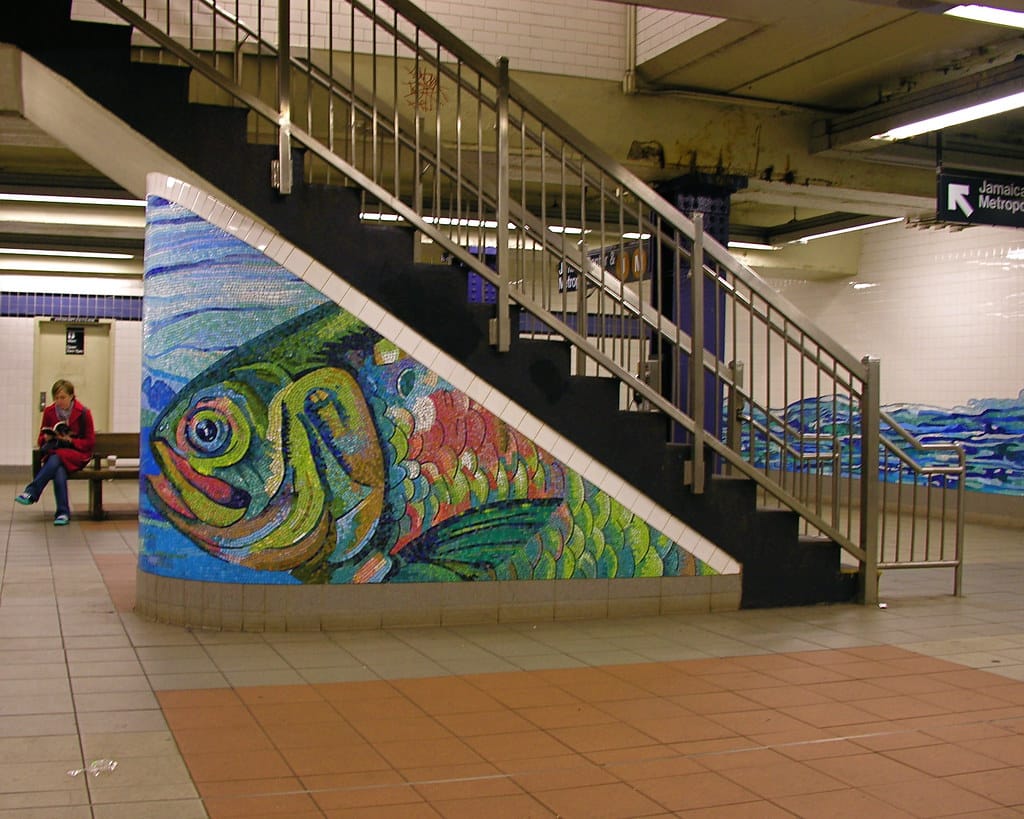Our Waterways Witness an Underwater Procession

The city has experienced its first tantalizing days of returning warm weather when the benches in the parks are again fully occupied and the buds of the trees overheard are ready to erupt into canopies of flowers. An awakening of nature is also happening in the currents around our urban archipelago. On this spring equinox, we consider this often invisible but vital life in our rivers, tributaries, and great harbor.
In the Hudson River Estuary, which flows all the way up to Troy, a massive fish migration is underway. Through knowledge embedded deep in their DNA, these fish are able to swim from the Atlantic back to the rivers where they were spawned, preferring these safer waters to lay their own eggs. They include the large Atlantic sturgeons that can grow to 14 feet long and prefer the cool, dark depths, and the river herrings, which once numbered in the millions, but have had their numbers cut in our often polluted and over-harvested waters. Soon, small lined seahorses will also bob into the Hudson, drawn to the warming water, where they will find the plankton that gives the river its greenish tinge and places to latch onto for security against the currents and spring storms.
On Staten Island in Richmond Creek, tiny glass eels that were born in the Sargasso Sea have arrived to spend time in these quiet waters before they are big enough to brave their returns to the ocean downstream. There, they can live for 20 years. And out in the harbor and off the shores of the Rockaways, humpback, fin, and North Atlantic right whales are roaming as they migrate to the Gulf of Maine, persevering despite the noise, fishing gear, and ships that make their survival precarious. Dolphins, too, will soon draw the attention of New York beachgoers as they ride the surf, their fins buoyantly emerging just beyond the waves.
Find a view of the water if you can and just watch; maybe you won’t notice anything remarkable—the crest of a whale, the dive of a cormorant—but you will see the rippling surface of this realm that holds hidden below it another side of the city that is as much a part of it as the land. Perhaps quietly proclaim these words to the creatures in these tides from poet Walt Whitman’s “Mannahatta” as you stand on this seasonal bridge between winter and spring that brings us closer to our local ecology: “City of hurried and sparkling waters! City of spires and masts! City nested in bays! My city!”

- More watery spaces are planned to be established in the city, with Powell’s Cove Park in Queens recently approved for a wetland restoration. Located in College Point, the area still experiences flooding that recalls when it was a wetland, before it became the Northeast’s rubber capital for its industrial activity, and now will return some of its shoreline to nature.
- The city’s only freshwater river is in the Bronx. It winds through the zoo, where it cascades in twin waterfalls, and by industrial relics like an abandoned railroad station. If you would like to experience its sights, the Bronx River Alliance’s Annual Amazing Bronx River Flotilla is coming up on May 4 with a four-mile paddle that raises funds for its programming.
- A new installation by artist Stacy Levy is drawing attention to the microscopic organisms known as diatoms that live in our waters. Called “Diatom Lace on the East River” and located along the river between 53rd and 60th streets in Manhattan, it includes 5,000 pavers embossed with patterns inspired by the shapes of these single-celled organisms that are crucial to supplying our oxygen.


